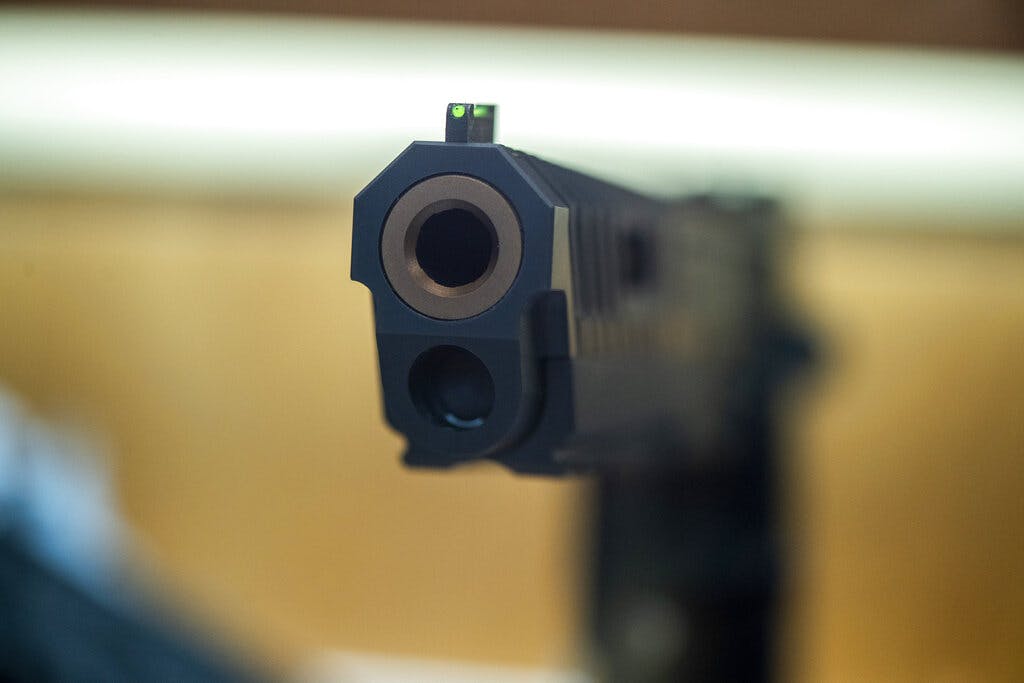2nd Circuit’s Fumble of New York Gun Law Could Soon Return the Issue to Supreme Court
Hardaway is the first challenge to new gun laws to reach the appellate level, leaving many court-watchers convinced that the Supreme Court will have to step in once again.

In a gun rights case being argued before the Second Circuit Court of Appeals, three judges appear willing to uphold a restrictive gun law in New York state, which observers say could return the Second Amendment to the Supreme Court docket in the coming months.
The case, Hardaway v. Nigrelli, revolves around a state law that bans firearms from houses of worship, calling churches, synagogues, and mosques “sensitive places” where the government can reasonably restrict weapons. The case is one of five challenges to New York’s Concealed Carry Improvement Act, which was adopted in the wake of a high court ruling on guns last year.
Hardaway is the first challenge to these gun laws to reach the appellate level, leaving many court-watchers assured of their belief that the justices will have to step in once again.
The president of the New York County Lawyers’ Association, Vincent Chang, told the Sun that based on the oral arguments Monday, the Hardaway case will likely make its way to the Supreme Court by the end of the next term in 2024.
“I think the judges probably think this is going to the Supreme Court,” Mr. Chang said after listening to the oral arguments. The three judges “definitely want to get this right with respect to the historical antecedents of firearms regulation in houses of worship.”
The three judges on the panel — Dennis Jacobs, Gerard E. Lynch, and Eunice C. Lee — were appointed by Presidents George H.W. Bush, Obama, and Biden, respectively.
Judge Jacobs seemed especially enlivened by the case. Just minutes into the oral arguments, he told the lawyer who was defending the law that houses of worship and schools are two sides of the same coin — both important for civic life, one being religious and one being secular. Because banning firearms from schools is constitutional, then it could be logical that banning firearms from churches should be too, he told counsel.
The judge also showed little patience for the arguments of those seeking to challenge the law, often interrupting and asking pointed questions. The Second Amendment advocates engaged in a “selective reading of history,” Judge Jacobs said as one lawyer attempted to recount the history of 18th and 19th century firearms regulation.
In New York State Pistol and Rifle Association v. Bruen, six Supreme Court justices held that many of New York’s restrictions on permit applications and implementation of “gun free zones” were unconstitutional, leading the state to adopt the CCIA just eight days after the high court handed down its decision. Writing for the majority, Justice Clarence Thomas stated that all firearms regulation must be “consistent with this Nation’s historical tradition of firearm regulation.”
The challenge was originally brought by the Reverend Jimmie Hardaway of upstate New York, who often had a firearm concealed in his church because there was no security for his congregants and he felt he needed some protection from those who may seek to do them harm.
Second Amendment rights groups often use the phrase: “The only thing that can stop a bad guy with a gun is a good guy with a gun.” In 2019, a man in Texas entered a local church and murdered two parishioners with a shotgun, only to be killed by another congregant who himself was carrying a firearm. The New York law would have barred the congregant from having his weapon on him during services.
Last year, Judge Glenn Suddaby of the Western District of New York sided with Reverend Hardaway, ruling that the state could not prove the necessary historical tradition of regulating firearms in places such as churches or synagogues.
Reverend Hardaway’s lawyers hope the appellate judges will be sympathetic to the hundreds of pages of legal analysis Judge Suddaby offered in his decision.
“Since the plain text of the Second Amendment presumptively protects Plaintiffs’ proposed course of conduct—carrying handguns for self-defense—the State bears the burden of ‘demonstrating’ that its modern enactments are ‘consistent with the Nation’s historical tradition of firearm regulation,’” Reverend Hardaway’s lawyers wrote in their argument. “In order to do so, the State needs to come forward with evidence of historical laws that similarly burden the right to bear arms for similar reasons.”
Mr. Chang says Judge Suddaby’s decision could fall on deaf ears, though. “My prediction is that they’ll reverse the lower decision, based on what I’ve heard,” he said. He also predicted that the nine justices may have to find some stricter guidelines than the ones they set forth last year so that the Supreme Court won’t be hearing gun rights cases every few months.
“In Bruen, Kavanaugh was the swing vote, if there was one,” Mr. Chang said. “He constructed a narrower set of guidelines than the majority did. He’ll look very closely so that they can provide clear guidelines going forward.”

